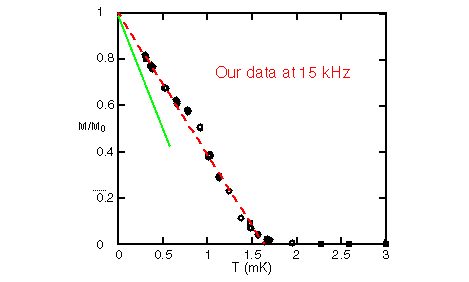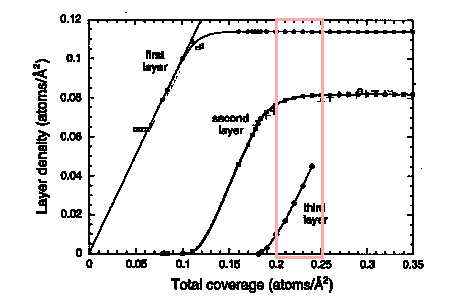
The range of coverages that we studied corresponds to the region where the second monolayer becomes ferromagnetic. For a complete review of the coverage data see H. Godfrin and H.-J. Lauter in Progress in Low Temperature Physics (1995).

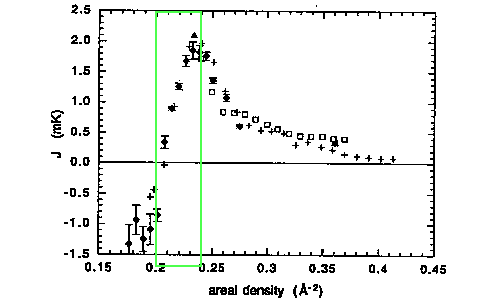
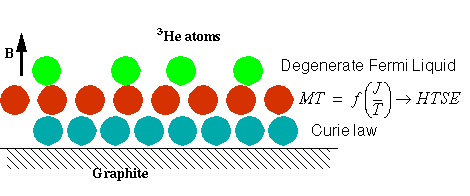
Prior to this work, the best comparable experiment was by Schiffer et al. at much higher fields.
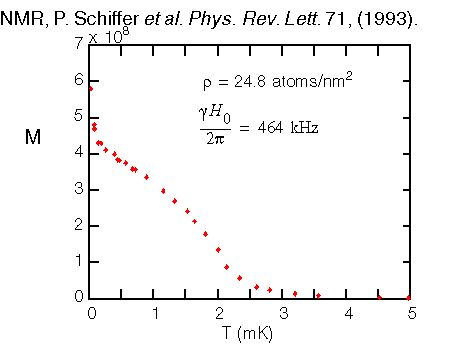
There was also a heat capacity study:
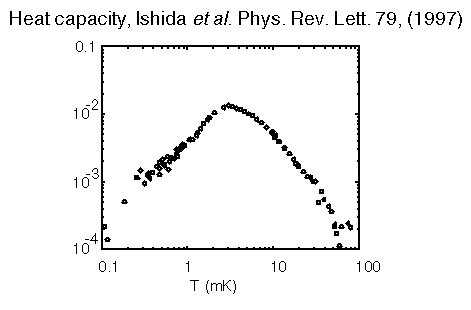
Below we have an outline for the arguement on why it is important to look at the low field limit.
CLASSICAL MAGNETIC PHASE TRANSITIONS
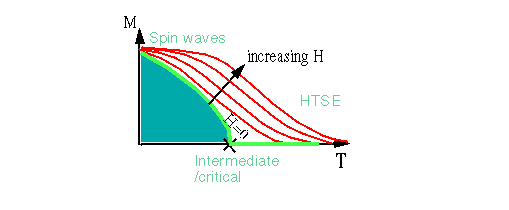
This is consistent with the lore of no phase transition. But is this relevant to this system?
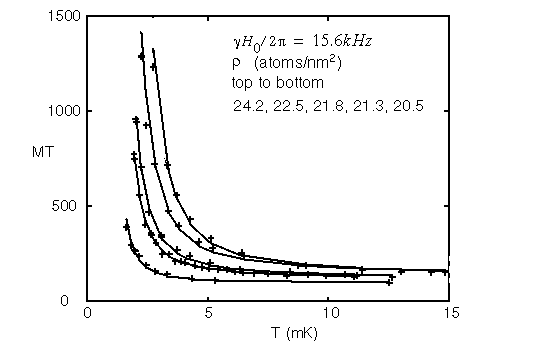
To analyze the high temperature data we can adjust both the effective exchange constant J and an effective number of spins.
Results of the high temperature analysis (Heisenberg model)
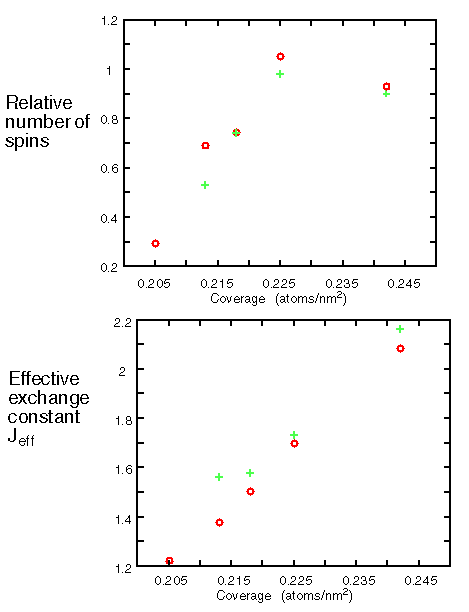
CW results -- in the low temperature regime
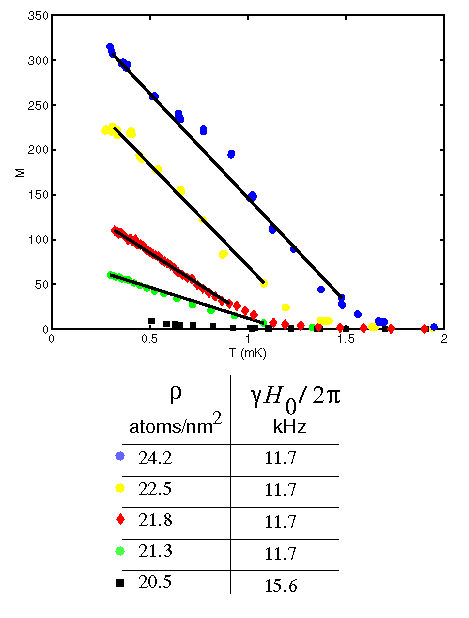
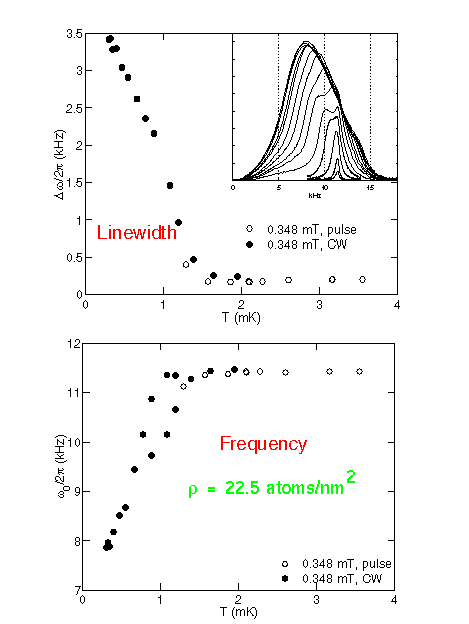
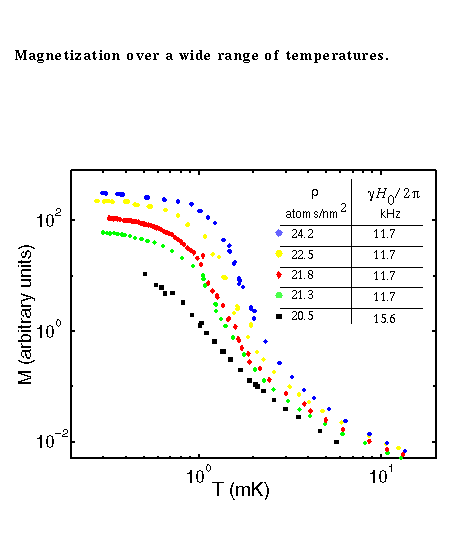
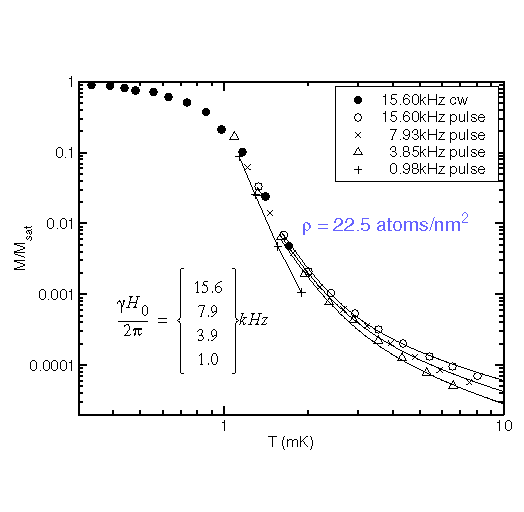
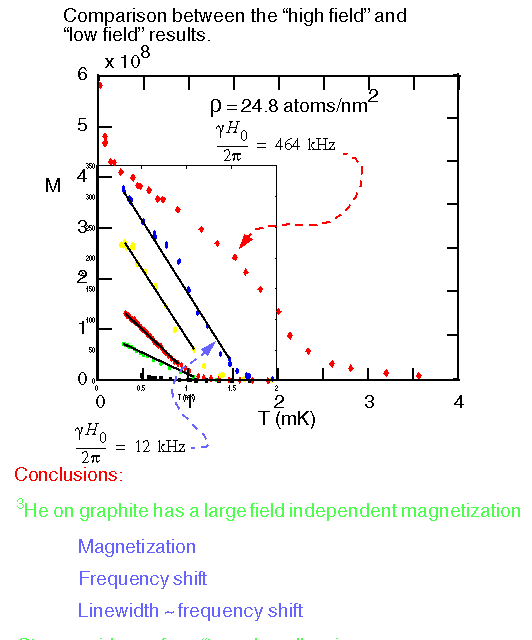
Comparison with Heisenberg model
Kopietz, Scharf, Skaf, and Chakravarty, (1989).
Last term is the k = 0 term which dominates at low temperatures and low fields.
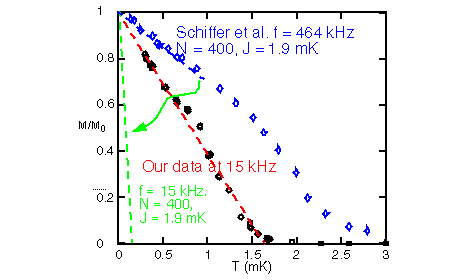
Inclusion of the weak dipolar energy can lead to long range order.
Yafet, Kwo, and Gyorgy, Phys. Rev. B, (1986).
